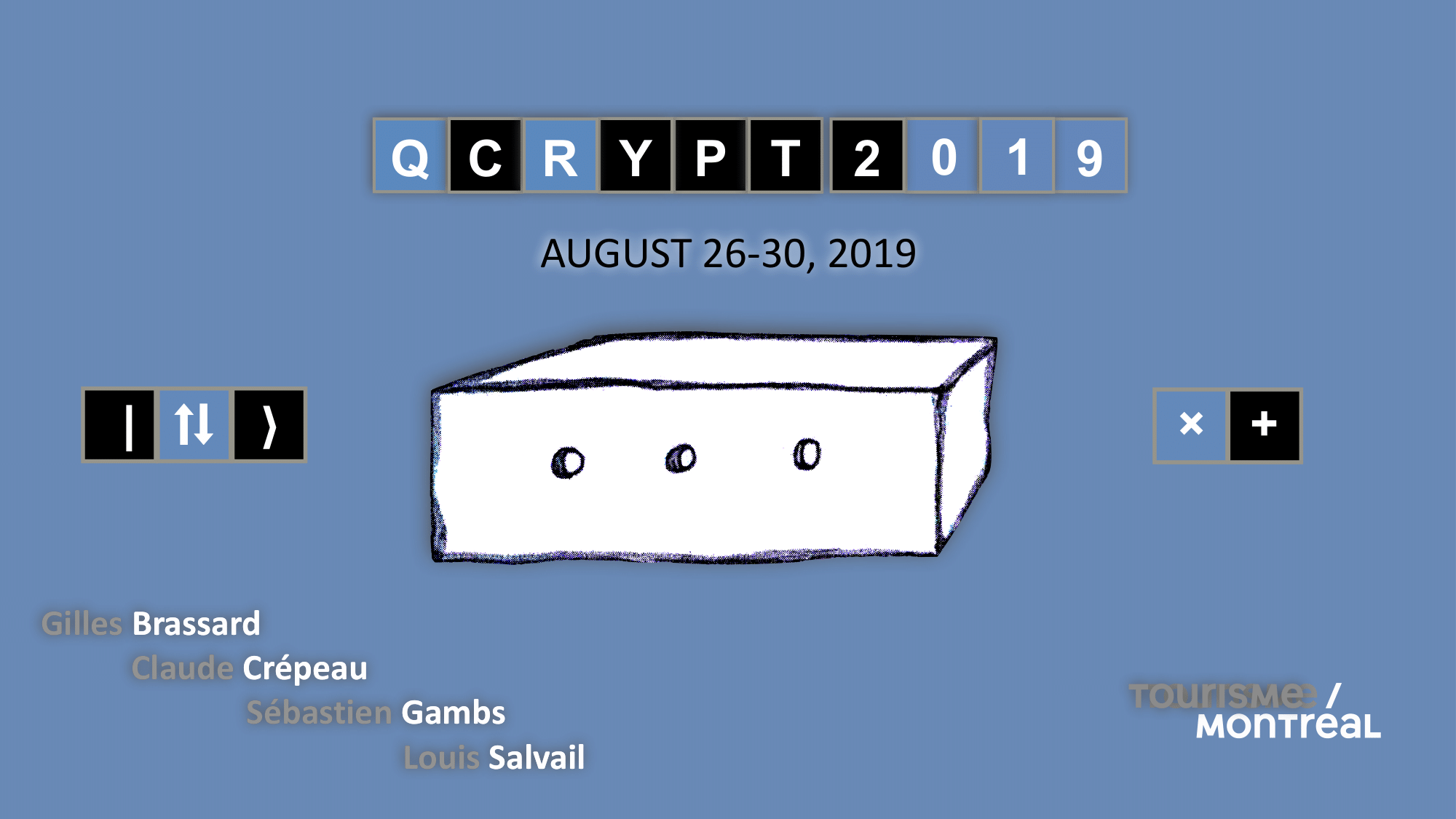Xing Chen, Ilja Gerhardt, Jörg Wrachtrup, Robert Garthoff, Kai Redeker and Wenjamin Rosenfeld.
The loop-hole free test of Bell’s inequality allows to prove the quantum and non-local character of nature. It further allows to certify quantum random numbers with a very limited set of prior assumptions [1,2]. The randomness certified by Bell’s theorem was extracted by singlet probability $p(a|x)$ in previous studies, which does not fully extract the device-independent (DI) randomness in the experimental data. For instance, from the singlet probability $p(a|x)$, when the Bell-parameter of the Clauser-Horne-Shimony-Holt (CHSH) inequality equals to $2\sqrt{2}$, the DI randomness in per raw event data (one event data means the output data $a,b$ from one experimental run) is 1.23 bits [3,4,5], while with the singlet probability $p(a|x)$, only 1 bit DI randomness can be extracted.\\
A more precise and smaller upper bound has been deduced by semi-defined-programs (SDP), but it is not convenient for practical use and it is difficult to guarantee the security of the randomness from SDP. Here, we develop an analytic upper bound for joint outcome probability $p(ab|xy)$, such we can extract all the DI randomness from the Bell test data. Note that this upper bound of $p(ab|xy)$ is derived from the worst guessing probability with input $x,y$ and output $a,b$. Subsequently, there are no extra assumption about the experimental devices, so with this upper bound of $p(ab|xy)$, the randomness from the experimental data can still be considered as device-independent.\\
A weaker limit for the extraction of randomness from experimental data is the bound on so-called semi-device-independent (SDI) conditions. These utilize e.g.\ dimension witnesses [6,7]. Here a smaller upper bound of $p(ab|xy)$ is derived, and substantial more randomness can be extracted than in the device-independent cases. With this new bound of $p(ab|xy)$, even when the Bell-parameter of CHSH inequality equals to 2 or slightly below, certified randomness can still be extracted under certain conditions. Of course the number of assumptions is increased accordingly.\\
The Bell-test data from the loop-hole free experiment in Munich was analyzed [8]. In this experiment, 55568 events were recorded. Among them, 27683 events were acquired for the $\ket{\psi^-}$ state, and 27885 events data for $\ket{\psi^+}$ state. Take $\ket{\psi^+}$ as an example, the correlation value of the $\ket{\psi^+}$ data is $2.085\pm0.02$ [8]. With the model in~\cite{pironio_nature_2010}, the DI randomness in per raw outcome data is 0.032 bits. In our updated model, the DI randomness in per event data can be increased to 0.062 bits. This implies that 94\% more randomness from the same experimental data can be extracted. If we relax the conditions to the extraction of semi-device-independent conditions 0.091 bits of randomness per raw event can be extracted, which exceeds the prior values by approx.\ 47\%.
[1] R. Colbeck, PhD dissertation, Univ. Cambridge (2009).
[2] S. Pironio, A. Ac´ın, S. Massar, A. B. de la Giroday, D. N. Matsukevich, P. Maunz, S. Olmschenk, D. Hayes, L. Luo, T. A. Manning, et al., Nature 464, 1021 EP 2010).
[3] A. Acin, S. Massar, and S. Pironio, Phys. Rev. Lett. 108, 100402 (2012).
[4] H.-W. Li, P. Mironowicz, M. Paw lowski, Z.-Q. Yin, Y.-C. Wu, S. Wang, W. Chen, H.-G. Hu, G.-C. Guo, and Z.-F. Han, Phys. Rev. A 87, 020302 (2013).
[5] J.-D. Bancal, L. Sheridan, and V. Scarani, New Journal of Physics 16, 033011 (2014).
[6] J. Bowles, M. T. Quintino, and N. Brunner, Phys. Rev. Lett. 112, 140407 (2014).
[7] T. Lunghi, J. B. Brask, C. C. W. Lim, Q. Lavigne, J. Bowles, A. Martin, H. Zbinden, and N. Brunner, Phys. Rev. Lett. 114, 150501 (2015).
[8] W. Rosenfeld, D. Burchardt, R. Garthoff, K. Redeker, N. Ortegel, M. Rau, and H. Weinfurter, Phys. Rev. Lett. 119, 010402 (2017).


